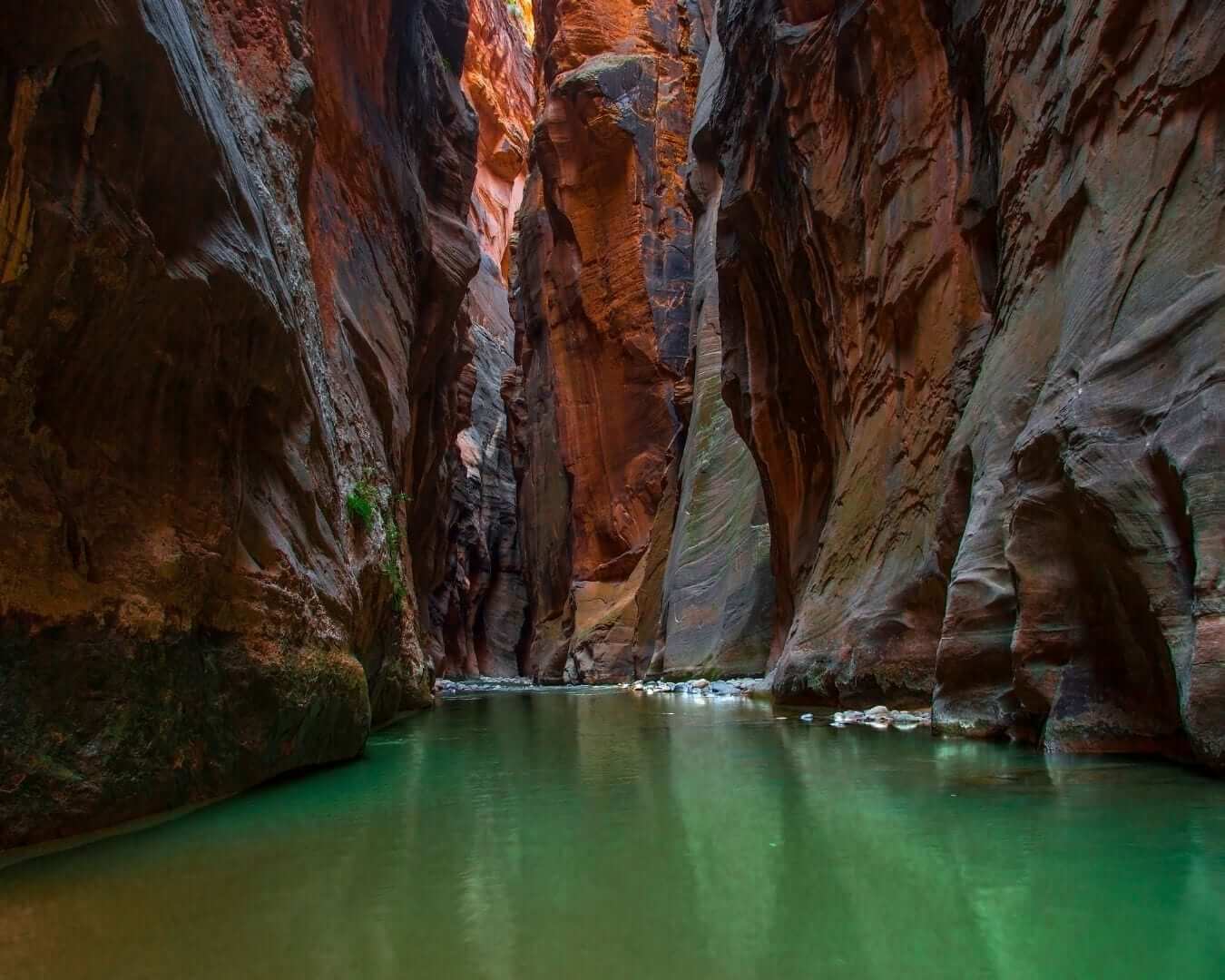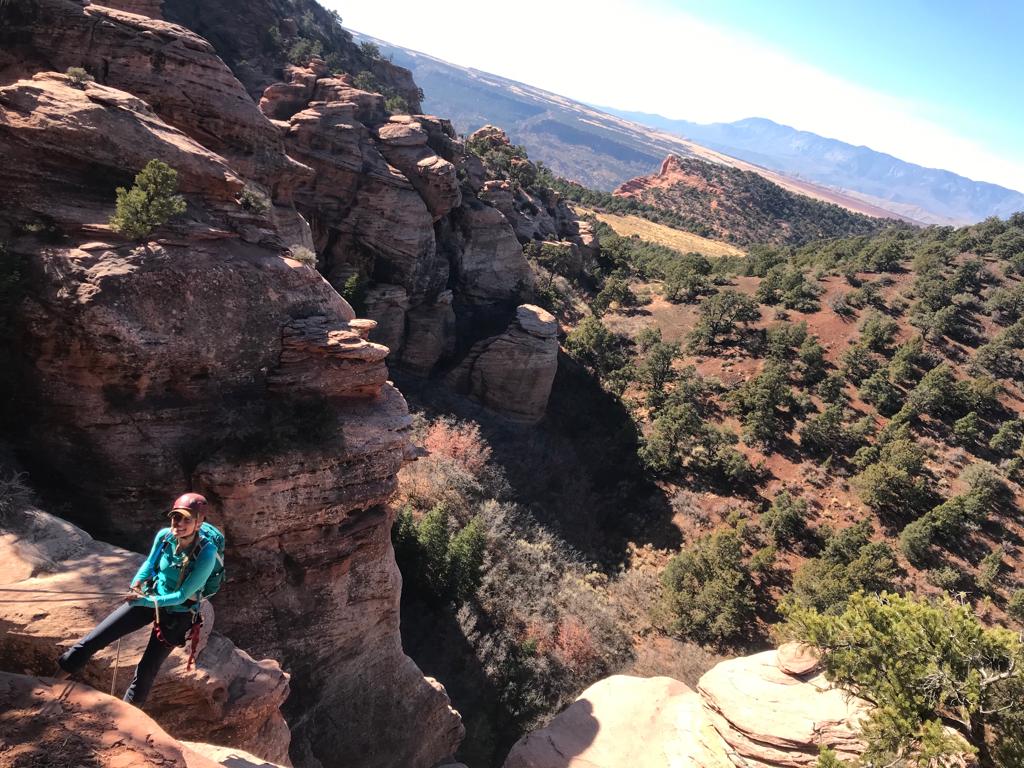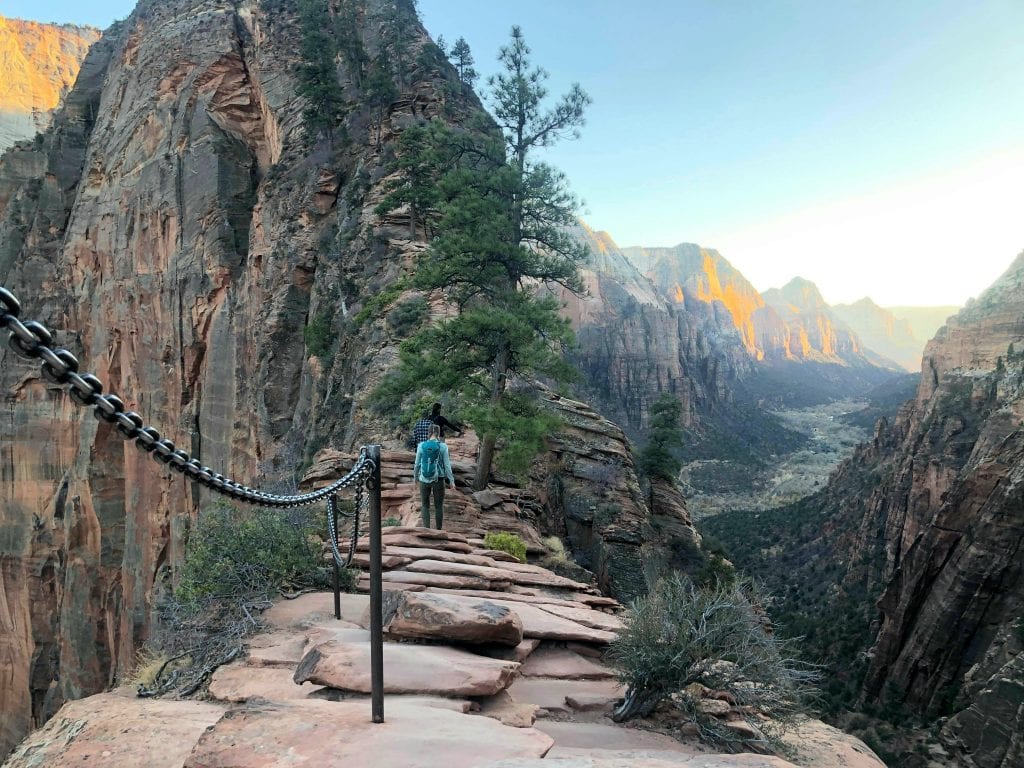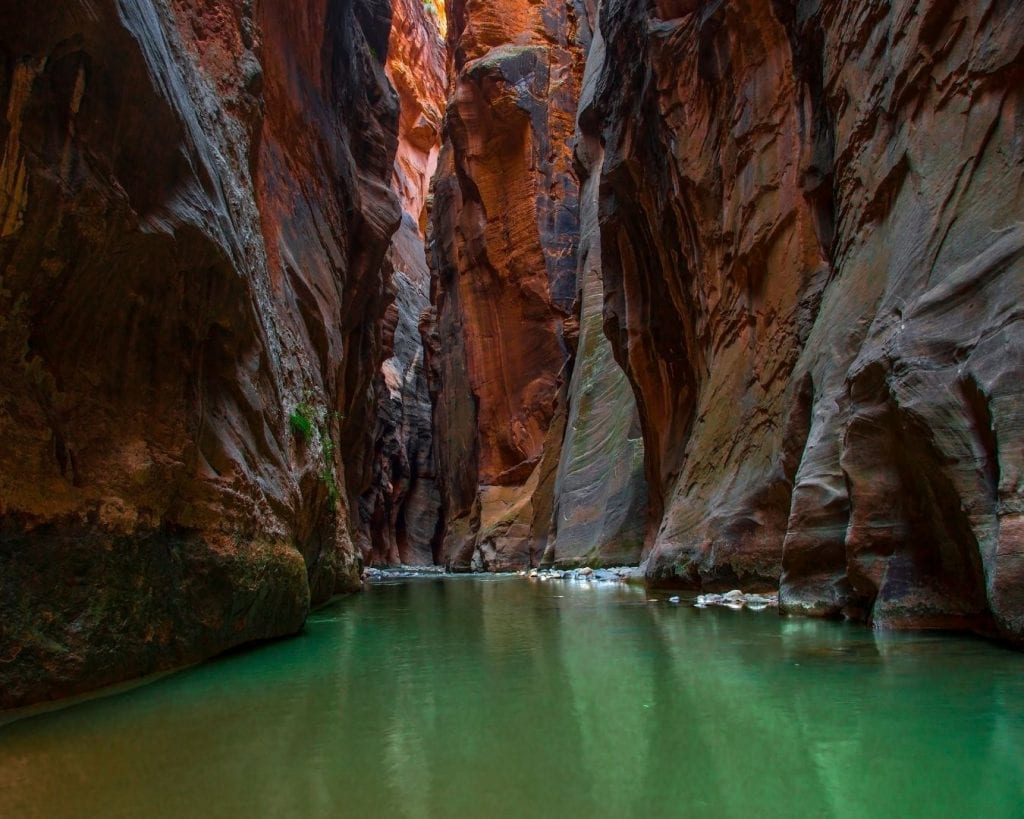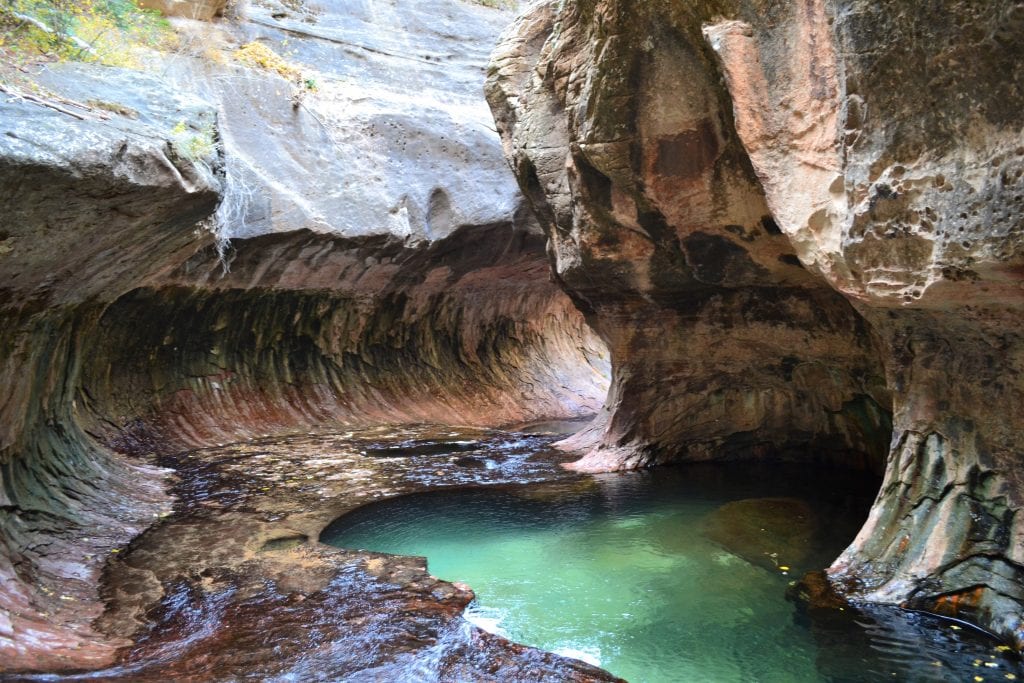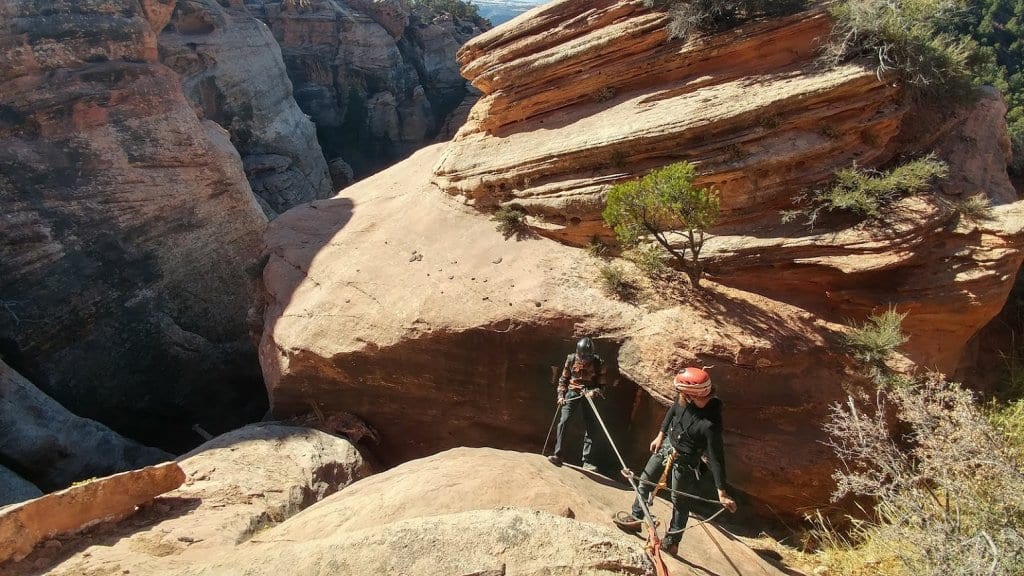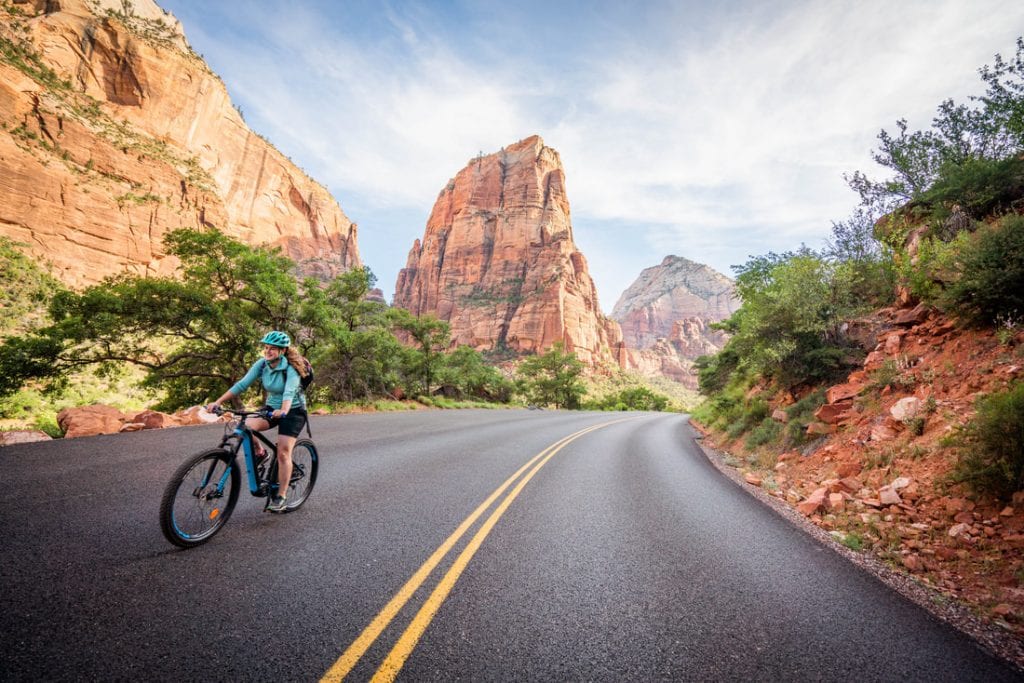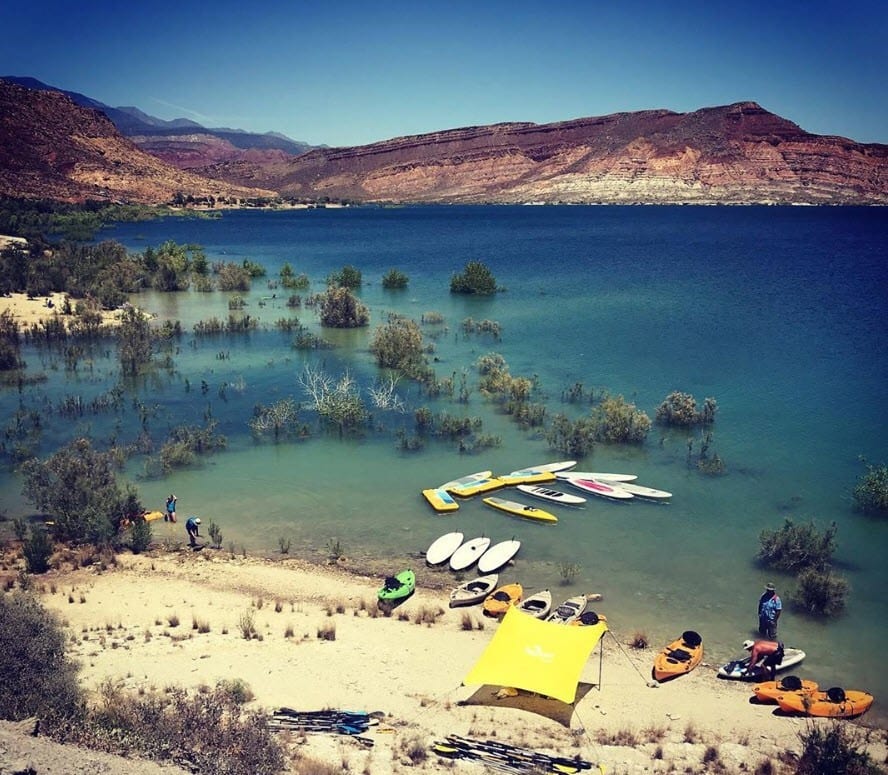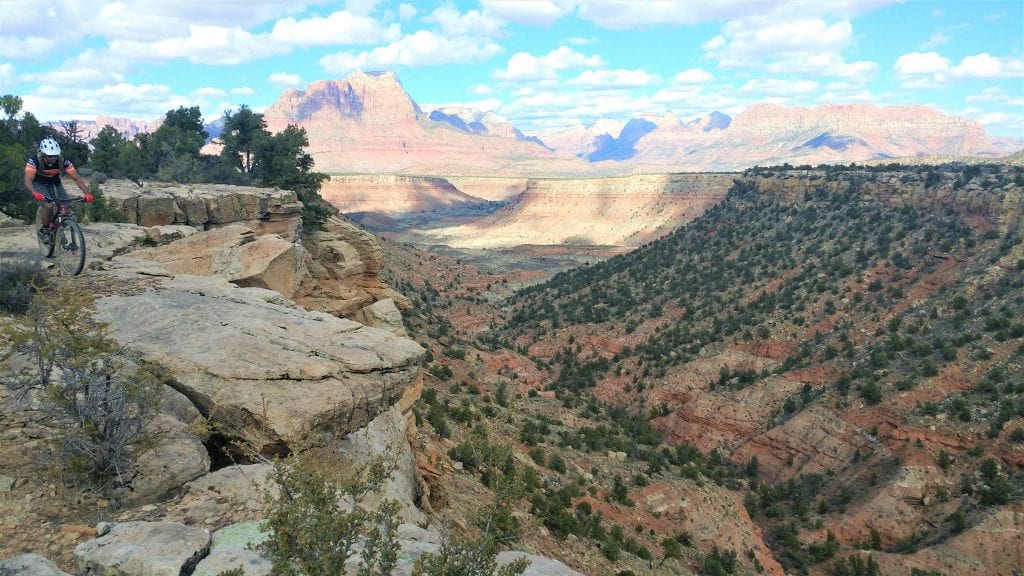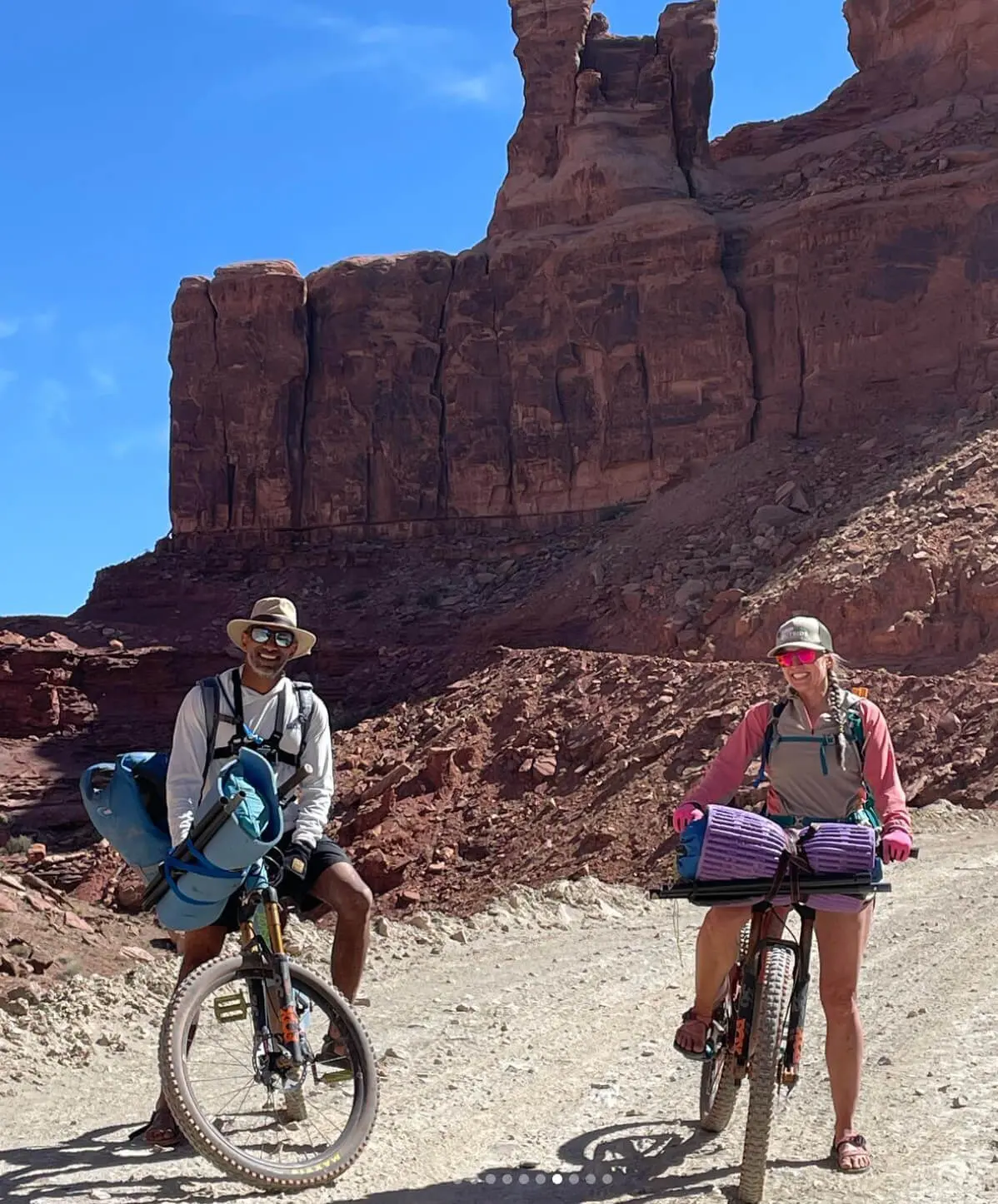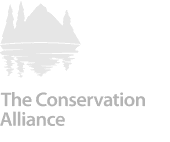What You Need to Know Before You Go to Zion
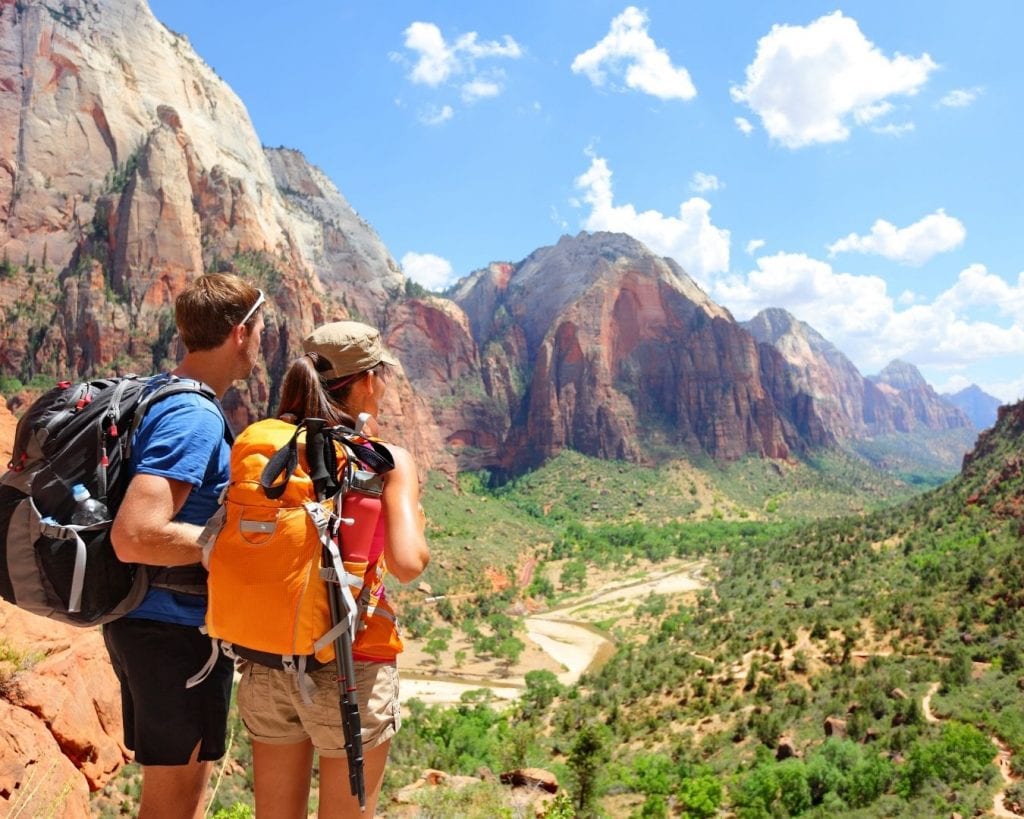
Zion National Park is one of America’s most dramatic national parks, and is a must-see in our books. Located in southern Utah, near Springdale, Zion National Park is a three-hour drive from Las Vegas or a four-hour drive from Salt Lake City. However, a trip to Zion National Park is certainly worth the drive. From the Virgin River Valley’s floor, visitors awe at the steep red cliffs as they soar to meet the brilliant sky above. With an array of hiking, biking, canyoneering, and climbing options, there’s a dose of outdoor adventure for all ages and abilities in Zion. It is no wonder why Zion National Park is one of the most popular national parks in the country. It had nearly four and a half million visitors in 2019 and over three and a half million in 2020. If this year is your first time visiting Zion or you are a returning explorer, you will want to read our expert tips and tricks, including the best time to visit Zion National Park and the best activities by season.
Best Time to Visit Zion National Park
Let’s begin by stating that you can visit Zion National Park year-round; however, you must be prepared. As Alfred Wainwright said, “There’s no such thing as bad weather, only unsuitable clothing.” When you visit Zion National Park depends a lot on what activities you would like to do while in the park as well as when you can take a well-deserved vacation.
The best time of year to visit Zion National Park depends on what you are looking for. Every season in Zion have their pluses and minuses. Summer is HOT, so planning early morning and evening adventures is important, especially if you’ll be out in the sun. The fall months bring fewer people, cooler temperatures and a higher chance for flash floods in the slot canyons. It is wise to layer up. In the winter, Zion can be cold and wet with evenings dropping below freezing. But winter is the best time of year to visit Zion National Park to avoid the crowds, since the majority of visitors come to the park in spring, summer and fall. Additionally, seeing Zion with a dusting of snow makes the red rock even more beautiful (photo above Watchman Trail in winter). If you are considering a winter visit, bring warm layers, gloves, hats, and rent a drysuit if you are planning to explore the Narrows or another wet canyon.
To make your best decision, below are general seasonal weather and visitor patterns.
Spring (March–May)
Spring in Zion brings warming temps, rushing waterfalls, and blooming wildflowers. Daytime highs usually hover between the 60s and 80s, making it one of the most comfortable times to hike. It’s also when the Virgin River runs strongest, which can close the Narrows temporarily—but adds power to the waterfalls and lushness to Emerald Pools. This is a prime season for hiking classics like Watchman and Canyon Overlook, and e-biking the Scenic Drive before summer crowds hit.
Summer (June–August)
Summer means long days and soaring temps—often 95–105°F. It’s also the busiest season, with shuttles running and trailheads filling early. Beat the heat by starting hikes at sunrise, choosing shaded trails like Emerald Pools, or heading to nearby water escapes like Quail Creek for SUP and kayaking. Afternoon thunderstorms and flash flood risks are common, so check conditions before entering any slot canyon. If you want to hike Angels Landing or the Narrows, plan for early mornings and bring plenty of water.
Fall (September–November)
Fall is one of the best times to experience Zion. Temps drop into the 70s–80s by day, nights are cool, and cottonwoods light up the canyon with golden leaves. Trails are less crowded after Labor Day, and it’s prime time for longer hikes like the Narrows, the Subway, or Angels Landing. This is also shoulder season perfection for mountain biking the Hurricane/La Verkin trail systems or cruising the Scenic Drive on an e-bike with crisp air and fewer crowds.
Winter (December–February)
Winter is Zion’s hidden gem. Daytime highs range from 40–60°F, nights dip below freezing, and a light dusting of snow makes the red cliffs glow. With shuttles paused, you can drive or e-bike the Scenic Drive without crowds, and many popular hikes like Watchman and Angel’s Landing are nearly empty. The Narrows can still be hiked with proper gear (drysuits and neoprene socks are available to rent locally). It’s also a perfect time for photography and solitude—just pack layers, gloves, and traction if snow or ice is on the trail.
Off-Season in Zion: Why It’s Worth It
Zion isn’t just a summer destination—in fact, the off-season (late fall through early spring) can be the best time to explore. Cooler temps mean you can hike longer without battling triple-digit heat, and you’ll have trails like Angel’s Landing and the Watchman almost to yourself. In winter, e-bikes are allowed on the Scenic Drive without shuttle traffic, so you can quietly cruise past the towering cliffs on two wheels. Even a dusting of snow makes the red rock glow. Shoulder season in November and March often brings ideal weather, fewer crowds, and easier permit access for popular hikes like the Subway and Angels Landing.
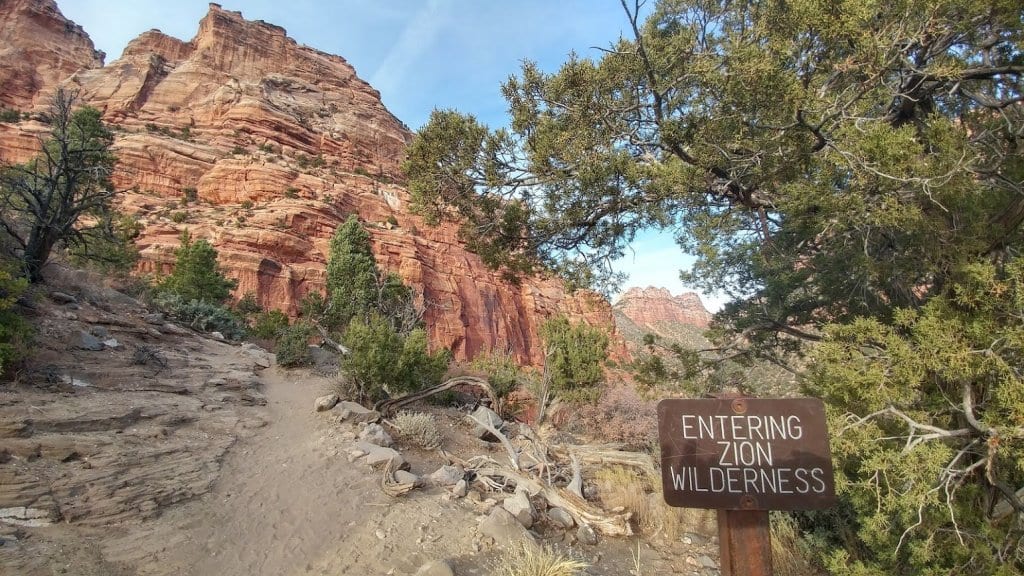
How Many Days to Visit Zion National Park
Most would say one day in Zion is too little time. The majority of visitors take three days to explore in and around Zion National Park. However, if you and your group are avid hikers, canyoneering enthusiasts, or climbers, plan for seven days.
Zion National Park Activities
Zion is famous for its hikes, but don’t overlook the other outdoor adventures nearby. Outside the park, world-class mountain biking trails in Hurricane and La Verkin deliver mesa-top views and desert singletrack for all levels. E-biking through the Scenic Drive is one of the best ways to experience the park—especially in spring and fall when the weather is mild and shuttle lines are long. If you’re looking to cool off, head 45 minutes west to Quail Creek State Park for kayak and SUP rentals, where you can paddle turquoise water framed by red cliffs.
Zion National Park Best Hikes
Whether you want an easy hike with beautiful vistas, a challenging all-day hike, or a moderate scenic hike, Zion National Park has almost as many hikes as Baskins Robbins has flavors. Which one you choose is based on your style, physical abilities, and time. However, to narrow down the list a bit, these are some of Zion National Park’s best hikes!
Zion Permits & Reservations You Should Know About
- Angels Landing: As of 2022, a permit is required year-round to hike past Scout Lookout onto the chains section. Apply via the seasonal or day-before lottery on Recreation.gov.
- The Subway: Both the bottom-up and top-down routes require permits, with advance applications recommended.
- The Narrows (Top-Down): Requires a permit; day hikes from the bottom up do not.
- Shuttles: During peak season (spring–fall), the Scenic Drive is closed to private vehicles. Use the park shuttle or rent an e-bike.
The Watchman
This is a moderate, 2.7 mile out-and-back hike, which takes you into the foothills of Zion. Hikers enjoy views of Bridge Mountain, the Watchman, and the Virgin Towers. Access to the trail is only a half-mile from the south entrance of the park.
Zion Canyon Overlook Trail
This is probably the most bang for your buck in the park. The trail is an easy mile, out-and-back hike. Walkers are delighted by stunning views of East and West Temples, Bridge Mountain, and Pine Creek Slot Canyon.
Angels Landing
Angels Landing is a strenuous, 5.4 miles out-and-back hike. The steep incline and decline requires switchbacks. Once you are near the top, hikers reach Scout Landing with impressive panoramic views (pictured above). This is where all have a decision to make: continue up the ridge with a series of chains along steep drop-offs or not to continue. Once you reach the top, you will be rewarded with views for miles across the park and beyond. Because of the difficulty and length of the hike, it is not recommended for young children.
Emerald Pools
This is an easy to moderate three-mile hike great for families, couples, and solo hikers. It can be accessed via the shuttle system across from the Zion Lodge. The trail follows a stream so there is plenty of lush vegetation, providing a bit of shade in the summer months. As the name implies, hikers are delighted by the three pools along the trek.
The Narrows
This well-photographed trail through a slot canyon and its river is a highlight for many visitors. The Narrows is a day-hike that can be five miles to almost ten miles roundtrip. However, since you hike the river, you will get wet. A must for all doing the Narrows are closed toed hiking shoes. Other suggested items are walking pole, waterproof socks, drysack, and drysuit for the colder months. The best time to visit the Narrows in Zion National Park Narrows is late May or October to catch warm weather but still avoid the crowded summer months. The river can close in early spring due to high water levels.
The Subway
If you’ve done any research on Zion, you’ve probably seen pictures of the Left Fork Subway. Don’t let this deter you from visiting it yourself, it’s just as stunning in person. This infamous permit-required hike off Kolob Terrace Road has two different routes to explore it (permits required for both). The bottom up route is a strenuous 9-mile round trip hike into the canyon shaped like a subway tunnel. Unless you have advanced canyoneering skills, the bottom up route is the hike you want to do. It still requires route finding, scrambling over boulders and creek crossings until you reach the Subway – the crown jewel of the hike. The top down route is a through-hike of the same Left Fork Subway canyon that requires more canyoneering and rope skills. It starts at the top of the canyon at Wildcat Canyon Trailhead and finishes at the same trailhead as the bottom up hike. For this route, you will need 60 feet of rope, rappelling skills, and extensive route finding experience, and it requires swimming through very cold water. It’s definitely an incredible adventure for those with the skills to complete it. You can apply for a permit for either hike here.
Zion National Park Best Canyoneering and Climbing
With a countless number of canyons and cliffs, the Zion National Park area is a favorite destination for those looking to try canyoneering and climbing. Both sports require appropriate gear and attire. Whether you are a seasoned climber or newbie canyoneer, many prefer to take a guided tour from the local experts to learn the basics or gain insider’s knowledge. Plus, when you go with an outfitter, you don’t have to worry about obtaining a permit or purchasing gear. Another bonus is you receive the do’s and dont’s of these favorite spots. Outfitters cannot guide trips inside the National Park, but there are so many spectacular canyons and cliffs outside the Park boundaries that they really don’t need to!
Learn more about the difference between canyoneering and rock climbing, hidden gems in Zion and all the Zion information you need from our podcast with Zion experts!
There are so many spectacular canyons and cliffs around the Zion area for guided canyoneering and climbing adventures, but here are just a couple examples!
Orderville Canyon
This is a 12.3 mile slot canyon hike that is great for beginners to advanced. It does require ropes, harnesses, and repelling gear; so, it is best to go with a guided tour or with an experienced partner. Often called the little sister of The Narrows (mentioned above), Orderville Canyon packs a lot of beauty, but requires more technical canyoneering skills. It is most popular in summer and fall.
Tooele Tower
If you want to see Zion National Park from a bird’s eye view, climb one-thousand-foot Tooele Tower. For seasoned climbers, this is a relatively easy rock climbing experience. If you are new to the sport or just want to do it with a guide, find and book with top rated guides.
Zion National Park via Bike or E-Bike
When the Scenic Drive is closed to cars (spring through fall), exploring the park by bike or e-bike is the best way to skip the shuttle line and move at your own pace. Riding under 2,000-foot cliffs with just the sound of your tires is an unforgettable experience. E-bikes are allowed anywhere regular bikes are, but neither can go on dirt trails inside the park. In winter, when the shuttle isn’t running, you can ride the Scenic Drive with almost no traffic. If you’re looking for more adventure, head to Hurricane for some of Utah’s best desert mountain biking—ranging from beginner-friendly loops to technical mesa-top rides.
Best Places to Visit Near Zion National Park
Although Zion National Park has a ton of great outdoor activities to take advantage of on a visit, exploring just outside the park gives you access to other activities like kayaking, SUP and some of the best mountain biking in the country. For those that enjoy watersports and would like to beat the heat of the summer months, a great option is kayaking or SUP at Quail Creek State Park in Hurricane, UT, just 45 minutes from the park entrance in Springdale.
For those that need a mountain biking fix, there is no mountain biking in the National Park; however, there are world renowned trails in Hurricane and La Verkin just outside the park. The JEM Trail system and Gooseberry Mesa deliver iconic desert riding and panoramic views across the Virgin River valley. From riding on the top of mesas overlooking Zion to winding singletrack through the desert, there is something for all levels of riders. Over the Edge Sports in Hurricane can set you up with the perfect rental bike for hitting the outstanding network of trails. Don’t worry there is a mountain bike and trail for all abilities.
What You Need to Know Before You Go Series
Whether you plan to visit Zion National Park this year or next, what you need to know before you go should help you map out your adventure. If you liked these expert tips and tricks for Zion National Park, you may want to check out the TripOutside Zion National Park podcast. If you have additional questions in the midst of planning, renting gear, or finding an outfitter for your Zion visit, please leave your questions in the comments below.
Leave No Trace in Zion
Zion’s sandstone cliffs and desert ecosystems are fragile. Please:
- Stay on designated trails to avoid trampling plants and fragile soils.
- Pack out all trash, food scraps, and toilet paper.
- Never carve or scratch the rocks or trees.
- Respect wildlife—keep a safe distance from bighorn sheep and mule deer.
- Use refill stations instead of buying single-use bottles; water is available throughout the park.
Visiting responsibly ensures Zion’s landscapes stay pristine for future adventurers.
Happy Adventuring!
Post contributed by Author and Adventurer, Heidi Siefkas. Her last visit to Zion National Park was a 3-day adventure detour from her cross-country Route 66 journey.

